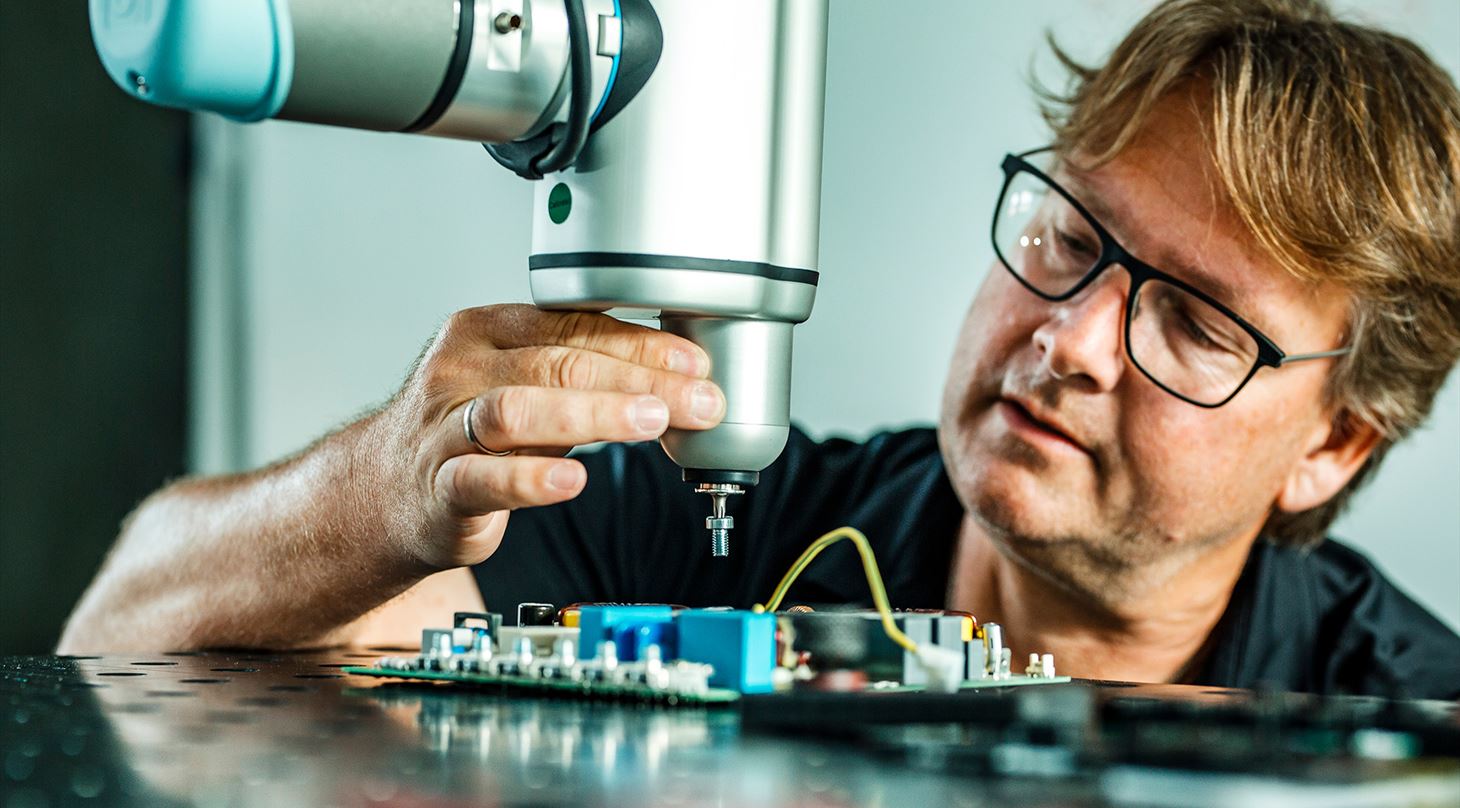
New robot concept reduces programming time from four hours to twelve minutes
A four-year research project that set out to simplify robot programming has reached its goal. The company Wila is already feeling the benefits.
The Danish Technological Institute (DTI), Universal Robots, University of Southern Denmark, and Terma, with support from Innovation Fund Denmark, have developed a no-code solution using Programming Ignition for Robotic Assembly Tasks (PIRAT), which redefines the concept of programming and re-programming robots.
This new, more user-friendly approach significantly reduces the time required to transition a robot from one task to another.
- This collaboration has succeeded in creating something valuable by making it easier for users to program robots, says Mikkel Labori Olsen, who is a consultant at DTI.
- We have already received good feedback from untrained robot operators who say that they find their robot easier to use and feel more courageous and equipped to use the robot as a tool in their production, he adds.
PIRAT works on the principle of "programming by demonstration". An operator physically guides the robot to perform a task and, based on these movements, the robot generates the necessary code.
This concept is not new, as many collaborative robots (cobots) are programmed by dragging them to a specific point rather than being remote-controlled to it.
PIRAT has taken this maneuver further by extending the concept to processes - such as machine tending, countersinking, and gluing - where the robot interprets the operator's demonstration and translates it into a functional program with robust error-handling mechanisms.
New approach to robot programming
PIRAT's user-friendly interface and context-setting procedures make it easy for operators to program robots.
- PIRAT has been a huge innovation journey for us at Terma. We have used PIRAT in countersinking and gluing applications, achieving faster re-programming of the robot. Programming the robot has also enabled us to retain valuable internal knowledge. PIRAT has really changed our approach to robot programming, says Asim Ikram, Senior Specialist at Terma Aerostructure.
- We are proud to have been part of the development of PIRAT. This user-friendly, no-code concept for programming and re-programming will significantly reduce the adaptation time of robots. It's a big step forward and can make robots far more accessible - not least to users who are not used to programming, says Rune Søe-Knudsen, who is Principal Innovation Researcher at Universal Robots.
From four hours to twelve minutes
User-friendly interfaces enable faster adaptation to different tasks or product variations.
A noteworthy example of this is the company Wila from Silkeborg where the re-programming time for their CNC machine was reduced from four hours to just twelve minutes with PIRAT.
- We see PIRAT as a game-changer. The time it takes to re-program our CNC machine has been significantly reduced and this has enabled a significant increase in our efficiency and adaptability. PIRAT also makes it possible to program the robot without further specialist training, which is a huge plus for production companies, says Sune Hvid Kristensen, who is an industrial technician at Wila.
PIRAT started as a research project in 2019 with the aim of solving the problem that many companies do not use their robots for assembly processes because they are too difficult to reprogram.
The ambition was to develop robot technology tailored to small-scale production, where robots could easily be adapted to new assembly processes.
Advantages of "Programming by Demonstration"
Flexibility: It significantly reduces the time needed for reprogramming the robot, enabling production robots to switch between different tasks, batches and/or product variations more efficiently.
Economy: Traditional programming methods often involve high costs such as specialised programmers, extensive training, and complex software. Programming by demonstration simplifies this process and significantly reduces these costs.
- Efficiency: It reduces programming time and increases adaptability, helping companies meet customer demands more efficiently.